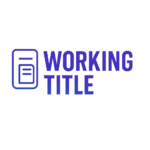For recruiters, talent community owners, and career content creators, sponsorships and ad placements can be a lucrative revenue stream. Whether you run a job board, newsletter, LinkedIn group, or career-focused website, brands and employers are willing to pay for access to your audience.
But how do you price your sponsorships and ad placements effectively? Set your rates too high, and you’ll scare away advertisers. Price too low, and you’ll leave money on the table.
The key is to find the right balance between audience value, advertiser ROI, and market demand. Here’s how to do it.
1. Understand What You’re Selling
Before setting prices, you need to define the value of your platform. Advertisers want to know:
- Who is your audience? (Industry, job level, experience)
- How engaged are they? (Open rates, click-through rates, conversion rates)
- What types of ad placements are available? (Job postings, newsletter sponsorships, display ads)
Common Sponsorship & Ad Placement Types:
Job Board Listings – Employers pay to post jobs in your network.
Newsletter Sponsorships – Advertisers sponsor a featured spot in your email.
Sponsored Content – Brands pay for an article, job feature, or resource in your community.
Display Ads – Banner ads on your website or job board.
Social Media Promotions – Sponsored LinkedIn posts, tweets, or group mentions.
Each of these carries a different price point based on reach and effectiveness.
2. Choose a Pricing Model
There are three common ways to price sponsorships and ad placements:
Flat Rate Pricing (Best for Predictable Revenue)
A fixed price per placement—simple and easy to manage.
Example:
- Job Listing: $199 per 30-day post
- Newsletter Sponsorship: $500 per issue
- Featured Social Media Post: $250 per post
Best for: Recurring ad placements, job listings, and newsletter sponsorships.
CPM-Based Pricing (Best for Large Audiences)
CPM (Cost Per Thousand Impressions) pricing means advertisers pay based on how many people see their ad.
Example:
With a $15 CPM and factoring in an average open rate of 40%, the advertiser would pay $120 for a newsletter sponsorship reaching 20,000 subscribers.
Breakdown:
- Total subscribers: 20,000
- Estimated opens (40% open rate): 8,000
- CPM formula: (8,000 ÷ 1,000) × $15
- Final cost: $120
Best for: Email sponsorships, job boards, and display ads with high traffic.
Performance-Based Pricing (Best for High-Intent Audiences)
Advertisers pay per click (CPC) or per action (CPA), meaning you get paid when their ad gets results.
Example:
- Cost Per Click (CPC): $1 per click on a job post.
- Cost Per Application (CPA): $50 per qualified job application.
Best for: High-converting job boards and recruiter-owned talent pools.
3. Research Market Rates & Benchmarks
Before setting your prices, look at what similar publishers charge.
Benchmark Pricing Estimates (Industry Averages):
- Job Board Listings: $99–$599 per post (depends on niche and audience size).
- Newsletter Sponsorships: $10–$50 CPM (higher for engaged audiences).
- Sponsored Content: $500–$5,000 per article (based on reach and SEO value).
- Social Media Promotions: $100–$500 per post (based on engagement).
Where to Find Market Rates:
- Check competitor pricing on job boards (Wellfound, Pallet, industry-specific boards).
- Look at media kits from similar newsletters (Beehiiv, Substack).
- Compare sponsorship rates on Paved, Swapstack, and similar platforms.
Once you know market rates, you can adjust based on your audience size and engagement.
4. Adjust Pricing Based on Audience Size & Engagement
Advertisers care about quality, not just quantity. A highly engaged, niche audience is often more valuable than a large but unengaged one.
How to Justify Higher Prices:
- High open rates: If your newsletter has 40% open rates, that’s worth more than a newsletter with 20%.
- Strong job conversions: If your job board regularly drives applicants, you can charge more.
- Exclusive access: If your audience is invite-only or highly targeted, it’s more valuable to advertisers.
General Pricing Adjustments Based on Audience Size:
- 5,000 subscribers or group members → Charge low-mid range of industry benchmarks.
- 10,000+ engaged audience → Move towards mid-high range.
- 50,000+ engaged audience → Justify premium pricing.
5. Offer Bundled & Tiered Pricing for Maximum Revenue
Rather than selling one-off sponsorships, offer packages and tiers that increase advertiser spending.
Example: Newsletter Sponsorship Tiers
| Tier | Includes | Price |
|---|---|---|
| Basic | 1 job post + 1 newsletter mention | $500 |
| Pro | 2 job posts + Featured newsletter spot | $1,000 |
| Premium | 3 job posts + Dedicated email + LinkedIn feature | $2,500 |
Why Bundles Work:
- Increases advertiser spending (more value, higher ticket sales).
- Encourages long-term deals (recurring sponsorships = stable revenue).
- Makes pricing feel more strategic (rather than arbitrary numbers).
6. Track Performance & Adjust Pricing Over Time
Your sponsorship rates should evolve based on demand, audience growth, and performance.
How to Know When to Raise Prices:
✔ You’re getting too many inbound sponsorship requests → Demand is high.
✔ Advertisers renew multiple times → They’re getting results, meaning they can afford higher rates.
✔ Your audience size has grown significantly → More reach = higher value.
Pro Tip: Run limited-time pilot pricing for new advertisers, then increase rates as you prove results.
Final Thoughts: Set Pricing That Reflects Your Value
Pricing sponsorships and ad placements isn’t about finding the cheapest rate—it’s about understanding your audience’s worth.
Key Takeaways:
- Know your audience’s value (niche, engagement, conversions).
- Choose a pricing model (Flat Rate, CPM, or Performance-Based).
- Research industry benchmarks to stay competitive.
- Adjust pricing as your audience grows and engagement strengthens.
- Offer tiered packages to maximize advertiser spend.
By setting strategic, data-driven pricing, you’ll attract premium advertisers and build recurring revenue—without undercharging for the influence you’ve built.
Now’s the time to set your rates and start monetizing your audience effectively.

Want more insights? Join Working Title - our career elevating newsletter and get the future of work delivered weekly.